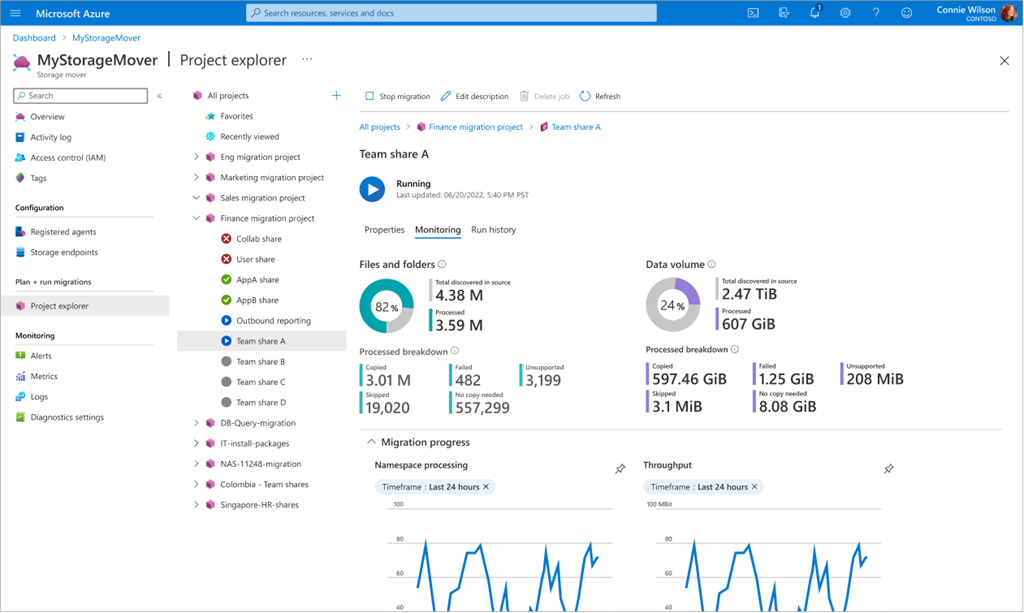
Back in February, Microsoft announced an Azure file migration program that provides popular migration tools to customers at no additional cost. Now, the company has launched a new Azure Storage Mover service that lets organizations migrate their files and folders to Azure Storage.
Azure Storage is a managed cloud storage solution that provides accessible, scalable, secure, and durable storage services. These include storage structures for data objects, message storage, disks for virtual machines, file storage, as well as NoSQL storage.
Microsoft’s Azure Storage Mover enables customers to migrate their on-premises network file system (NFS) share to an Azure blob container. The service leverages agents (virtual machines) to perform migration tasks. IT admins can design the migration plan in Azure and then track migrations directly from PowerShell, CLI, and the Azure portal. It’s possible to use the service for one-time or repeated data migration projects.
“You can use Storage Mover for different migration scenarios such as lift-and-shift, and for cloud migrations that you’ll have to repeat occasionally. Azure Storage Mover also helps maintain oversight and manage the migration of all your globally distributed file shares from a single storage mover resource,” said Jurgen Willis, VP of Azure Optimized Workloads and Storage.

Storage Mover to add support for additional source and target combinations
The Azure Storage Mover tool is currently available in private preview for business customers.
Microsoft plans to improve its Azure Storage Mover service to minimize downtime and manage migrations on a large scale. It will add support for additional sources and Azure Storage targets. Moreover, Azure Storage Mover will let users tailor a migration to meet their specific requirements.
Microsoft says the Azure Storage Mover tool will also let users run post-migration tasks like data validation and turning on data protection capabilities. These features will begin rolling out to Azure customers in the next few months.


